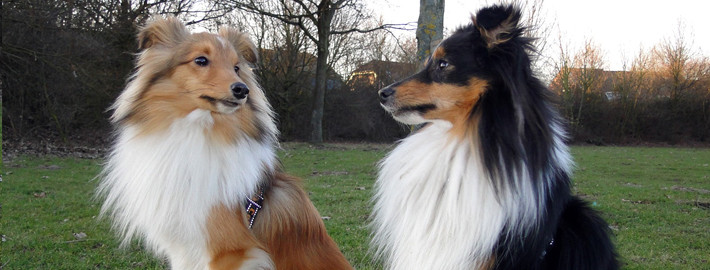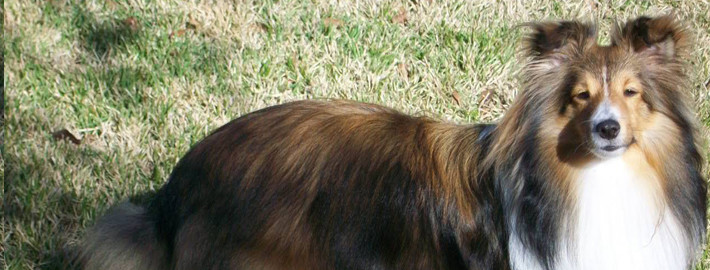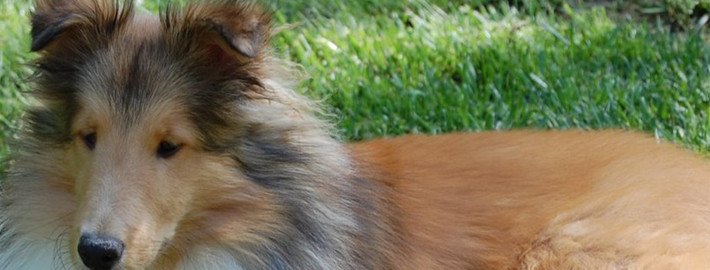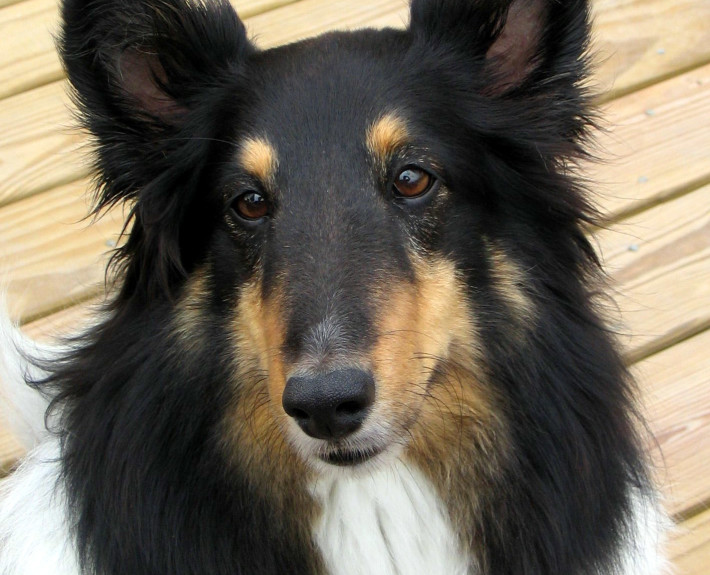What makes the Shetland Sheepdog Unique?
The Shetland sheepdog is a small, agile dog, longer than it is tall. Its gait is smooth, effortless and ground-covering, imparting good agility, speed and endurance essential in a herding dog. It has a double coat, with a short, dense undercoat and a long, straight, harsh outer coat. The hair of the mane, frill and tail is abundant. Its expression is gentle, intelligent and questioning. Although it resembles a rough collie in miniature, subtle differences distinguish the breeds.
The Shetland sheepdog is extremely bright, sensitive and willing to please. This combination makes for a dog that is very obedient, quick to learn and utterly devoted to its family. It is not only gentle, playful, amiable and companionable, but also excellent with children, although it can nip at heels in play. It is reserved and often timid toward strangers. It barks a lot.
Breed Groups
Page Contents
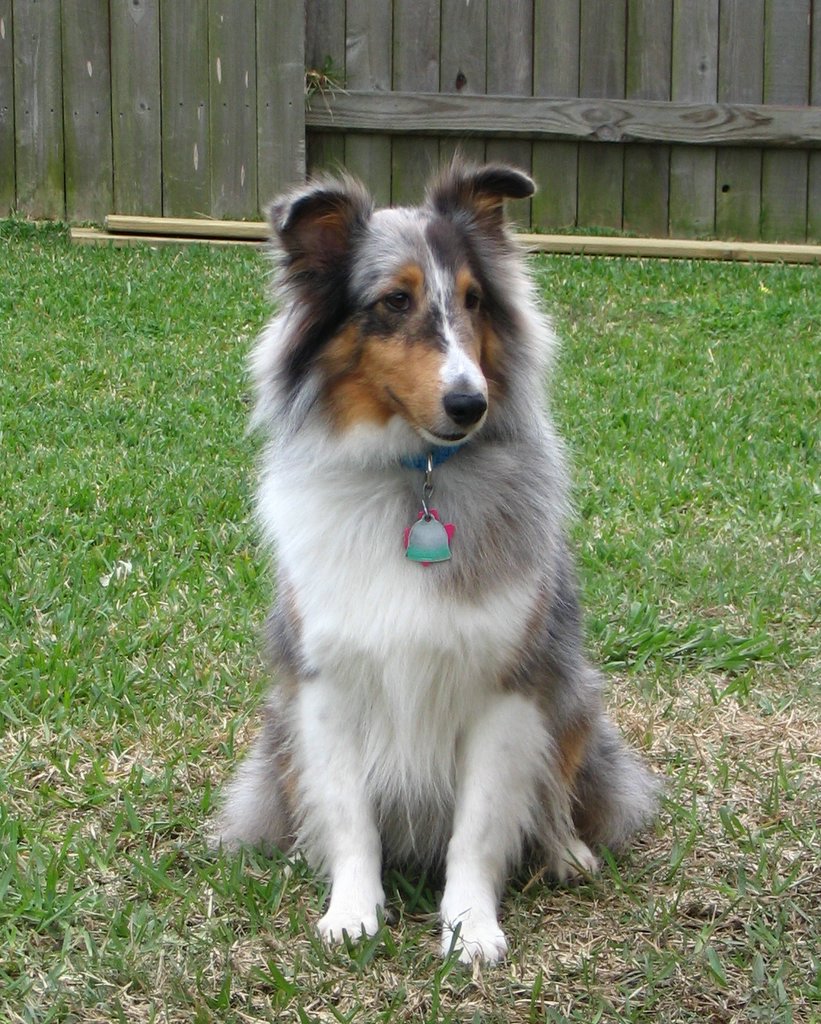
SnapShot
| Size: | Males – 33 – 41 cm (13 –16 inches) Females – 33 – 41 cm (13 –16 inches) |
| Weight: | Males – 7.3–9.1 kg (16–20 lb) Females – 7.3–9.1 kg (16–20 lb) |
| Origin: | Scotland |
| Life Span: | 12-13 years |
| Colour: | Sable, golden brown, mahogany, Blue Merle, tricolored(Black, White and Tan), bi-blue’s(Black, Grey and a bit of White) and bi-black, Black and Tan coloring. |
| Litter Size: | 4-6 puppies |
Is the Shetland Sheepdog Right For You?
Shelties love their families, but may be reserved at first with strangers. As a herding dog, they can be inclined to bark at and herd people. Shelties thrive on the farm, but adapt to many living situations if given proper exercise. The breed’s dense double coat requires regular maintenance.
If you are considering purchasing a Shetland Sheepdog puppy, learn more.
*Herding Group; AKC recognized in 1911.
*Ranging in size from 13 to 16 inches tall at the shoulder.
*Sheep herder, farm dog.
In 5 Words
- Alert
- Lively
- Reserved
- Gentle
- Playful
Characteristics
Learn About the Shetland Sheepdog
Description
The Japanese Akitas are only allowed in the colors of red, white, or brindle. Those dogs with loose skin, a black mask, or too much mass are not acceptable in the show ring because these characteristics generally mean crossbreeding has occurred. In the United States, Canada, Britain, and the rest of the non-FCI regulated areas no difference in type is made and all colors are allowed. The Akita comes in short and long coat varieties, but the latter is considered a fault in the show ring. The long coat only occurs when two carriers of the recessive trait have offspring. Akita females give birth to between 3 and 12 puppies in each litter.
The Japanese dogs are typically smaller and more like foxes in build than their American counterparts are. Male Japanese Akitas measure 64–70 cm. (25 ¼–27 ½ in.) at the withers, or the shoulder blades, and weigh between 70–85 pounds (32–39 kg.). Female Japanese Akitas weight between 50–65 pounds (23–29 kg.) and stand 58–64 cm. (22 ¾–25 ¼ in.) at the withers.
Female American Akitas weigh 80–120 pounds (36–54 kg.) and are 24–26 inches (61–66 cm.) at their withers. By contrast the male American Akita weighs around 100–145 pounds (45–66 kg.) and stands 26–28 inches (66–71 cm.) at the withers.
Short History of the Akita
The Akita (秋田犬 Akita-inu) is a large spitz breed of dog originating in mountainous northern regions of Japan. They descended from the Matagi, or bear hunting, dogs. Akitas were historically used in both dog-fighting and hunting capacities. These dogs were the largely the favored pets of nobles and in the past, European dogs were often cross bred with Akitas to improve their fighting abilities. The Akita is still commonly used as a police and guard dog in Japan.
Despite an earlier introduction to the US by the famous Helen Keller, the Akita breed was brought to the United States permanently in the 1950s. Returning World War II soldiers who had been stationed in Japan discovered the Akita breed during their tenure in the country and found them to be agreeable pets. Therefore, they brought them home with to the States. This led to a later official split in the breed, which was recognized and approved by the FCI.
There are now two separate strains the Japanese and American Akitas. The Japanese strain is also known as the “Akita Inu”. The Japanese strain only comes in selected colors, however, The American strain comes in all dog colors; with all other colors of the breed is considered atypical.
Temperament
The Akita Inu dog breed is not only alert but also protective of its family. They are quite affectionate to human members of their own family, as long as the Akita realizes the people are in charge and it is not. These dogs are prone to bite if they are teased and may respond badly to prolonged eye contact. Therefore, this is a breed that should not be left outside unsupervised by adult members of their human family.
Aloof around strangers, the Akita will accept guests in his home provided the owners are also around as well. Akitas are also known to enjoy carrying things around in their mouth and may grab humans in this fashion, but there is no harm intended. They are sensitive to criticism and respond very well to attention from their families.
The Akitas breed is also known for their cat-like habits such as licking themselves and silently stalking their prey, be it cats or chew toys. The Akita does not interact well with other dogs, especially those of the same gender, due to its dominant nature. It also is not a good breed for owners of smaller animals as it was bred to be a hunting dog and regards anything smaller as prey. Akitas are tolerant of cold climates but do not do well with warm ones.
Caring for Your Shetland Sheepdog
General Health
The average life span of the Shetland Sheepdog is 12 to 14 years. Breed health concerns may include Collie eye anomaly, dermatomyositis, hemophilia, hip dysplasia, hypothyroidism, hemorrhagic gastroenteritis, von Willebrand’s disease, Legg-Calve-Perthes disease, carpal ligament weakening, polyarthritis, nasal cavity tumors, congenital deafness, entropion, distichiasis, corneal dystrophy, cataracts, cryptorchidism, testicular neoplasia, MDR-1 gene mutation, patent ductus arteriosus, progressive retinal atrophy and seizures. This breed is expecially sensitive to ivermectin and milbemycin.
Grooming & Bathing
The Shetland Sheepdog can live outside in temperate climates but it does very well as a house dog. Its thick double coat requires combing or brushing at least every other day, and a minimum weekly shampooing.
Exercise & Training
This dog is very energetic, but regular routine that includes a short jog, a good long walk, or an active training and game session can meet its physical and mental exercise needs. If it is not given daily exercise, the Sheltie can become anxious and nervous. It is essential for this breed to spend its energy so that it can relax at home with its family at the end of the day.

